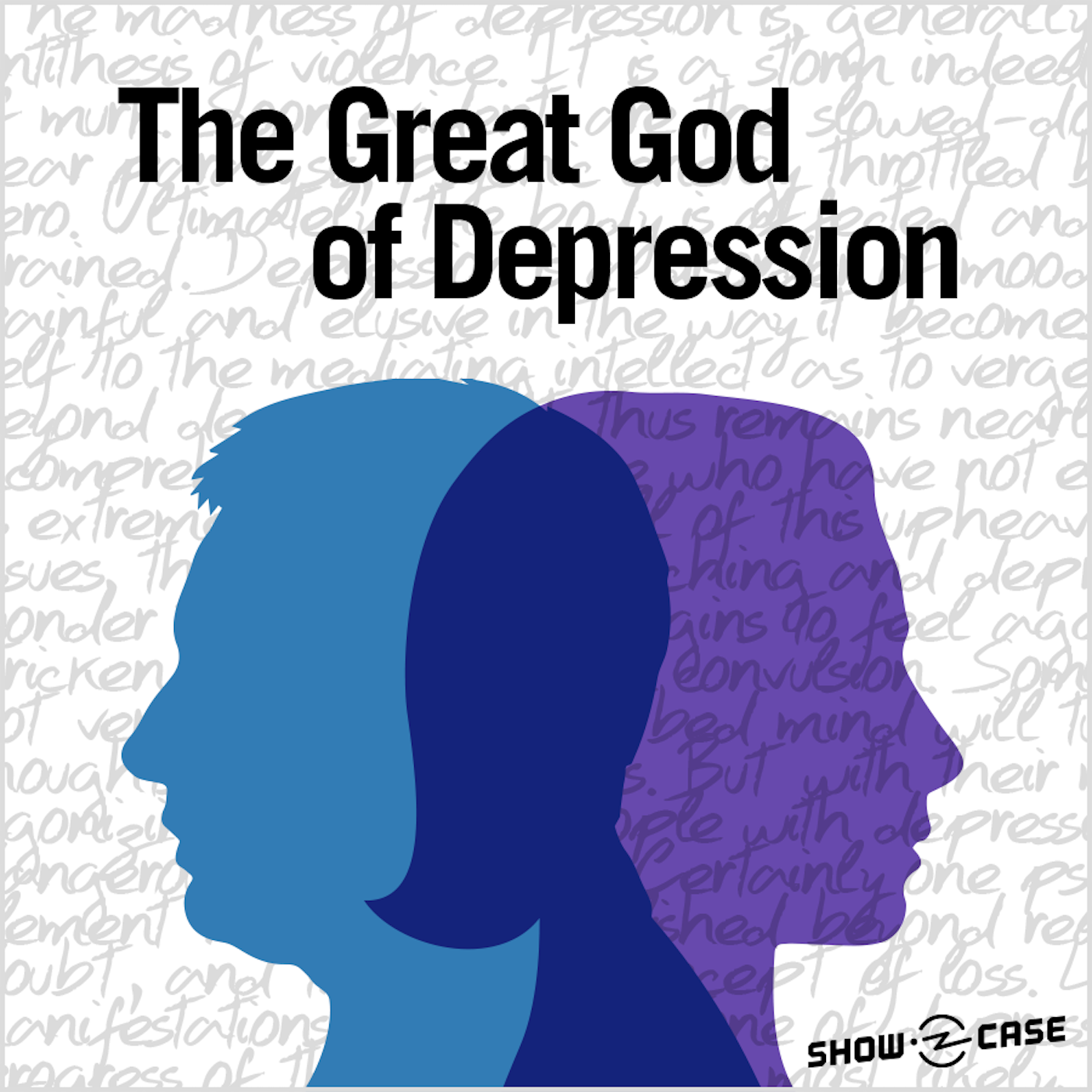The Great God of Depression
Originally aired Summer 2018
In 1998, a brain scientist named Alice Flaherty developed a rare form of madness. She felt so compelled to write that she scrawled sentences across the walls of her house and her own skin. Alice’s quest to understand her own bizarre behavior led her to William Styron, one of the most celebrated authors of the 20th century.
The Great God of Depression is produced by Karen Brown and Pagan Kennedy, with support from New England Public Radio. Music and sound design by Ian Coss. Julie Shapiro is the executive producer.
Subscribe & Listen
You can subscribe to Showcase to hear The Great God of Depression and other great series that are featured on Showcase.
THe team
Pagan Kennedy (Host) is a contributing writer at the New York Times and the author of eleven books. She has been a columnist for the The New York Times Magazine, The Boston Globe, and The Village Voice. In the '90s, she published a 'zine called Pagan's Head and was named the Queen of 'Zines by Wired Magazine. She has won numerous awards including an NEA fellowship, a Smithsonian fellowship, and two Massachusetts Cultural Council fellowships.
Karen Brown (Co-producer) is a longtime public radio reporter, print journalist, essayist, and audio documentarian, with a special focus on mental health issues. In addition to two decades at New England Public Radio, Karen has contributed to NPR, The New York Times, American Radioworks and many other national outlets. Her awards include the National Edward R. Murrow Award, The Daniel Schorr Journalism Prize, and Third Coast Audio Festival Award. For a selection of stories, visit karenbrownreports.org.
Ian Coss (Sound Designer) is an audio producer and sound designer whose work has been featured on The World, Studio 360, Life of the Law, Afropop Worldwide, Al Jazeera, and the BBC. He has produced several podcasts, including "Ways of Hearing" from Radiotopia's Showcase and “The New American Songbook” from The GroundTruth Project. More on all these projects at iancoss.com.
Thanks for additional support from Benjamin Brock Johnson, Whitney Light, Cathleen O’Keefe, Katherine Sullivan, Emily Jones, Abby Holtzman, Ian Fox, Audrey Mardavich, Alex Braunstein, and the PRX Podcast Garage. Thanks to Jack Gilpin, who read for us from Styron’s works, And a very special thanks to Alice Flaherty and Rose Styron, as well as to Alexandra and Tom Styron.
Archival material for the series came from the Rubinstein Library at Duke University, The DANA Foundation, a 1990 interview by NPR’s Terry Gross on Fresh Air, produced by WHYY, and the Diane Rehm Show, produced by NPR and WAMU. We also used material from the 92nd Street Y, biographer Jim West, filmmaker Joel Foreman, and the Sun Valley Writers Conference, an annual conference where readers and writers come together to celebrate ideas. Thanks to Librivox reader Stewart Wills for the Moby Dick excerpts. Sarah Shapiro designed our logo. And Michael Vitale and Shane Allesio performed additional music for the series.
CHAPTER ONE: THE NIGHT KINGDOM
After a personal tragedy, newly minted neurologist Alice Flaherty falls into a rabbit hole of mania, delusions and creative overload—and encounters a famous writer who revolutionized the conversation about mental illness.
CHAPTER TWO: THE ANGEL OF DEATH
On the heels of enormous literary success, author William Styron experiences a near-fatal depression and emerges as a defender of the mentally ill. Neurologist Alice Flaherty tries to balance a rare mental disorder with the birth of her healthy twins.
CHAPTER THREE: THE STOLEN BRAIN
After writing a revolutionary memoir, William Styron declares he has beaten depression, but he is wrong. A frightening repeat of madness and writers block brings on shame and desperate measures. He seeks help from brilliant neurologist Alice Flaherty, who has herself admitted to being “openly crazy.” Can she save him?
CHAPTER FOUR: THE WHITE WHALE
William Styron could never finish the war novel that was meant to be his masterpiece. Did that failure lead to his final depression? Or did depression stop him from writing? He and his doctor Alice Flaherty pore over the question together, trying to ward off his suicidal fears and a baffling paralysis, until his wife makes an unconventional and risky suggestion.
CHAPTER FIVE: THE SHINING WORLD
In the final episode, after years of struggle with depression, William Styron keeps his bargain with his readers, and his wife manages to keep up his will to live until the very end. Alice Flaherty emerges from her own years of madness to a happier life, albeit a less literary one.
BONUS: A VISIT WITH TONY SHALHOUB
Actor Tony Shalhoub is well known for his role as one of the few openly mentally ill characters in television – an obsessive compulsive detective on the long-running show Monk.
In this bonus episode, Shalhoub sits down with co-producer Karen Brown to read passages from William Styron's work, and share his perspective on mental illness and creativity.
















